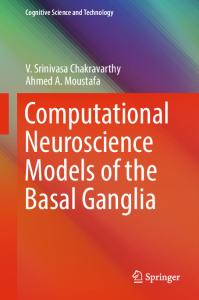Emotion Modeling Towards Pragmatic Computational Models of Affec
Emotion modeling has been an active area of research for almost two decades now. In spite of the growing and diverse body of work in emotion modeling, designing and developing emotion models remains an art, with few standards and systematic guidelines ava
- PDF / 10,833,536 Bytes
- 171 Pages / 439.37 x 666.142 pts Page_size
- 86 Downloads / 285 Views
State-of-the-Art Survey
Tibor Bosse Joost Broekens João Dias Janneke van der Zwaan (Eds.)
Emotion Modeling Towards Pragmatic Computational Models of Affective Processes
123
Lecture Notes in Artificial Intelligence Subseries of Lecture Notes in Computer Science LNAI Series Editors Randy Goebel University of Alberta, Edmonton, Canada Yuzuru Tanaka Hokkaido University, Sapporo, Japan Wolfgang Wahlster DFKI and Saarland University, Saarbrücken, Germany
LNAI Founding Series Editor Joerg Siekmann DFKI and Saarland University, Saarbrücken, Germany
8750
More information about this series at http://www.springer.com/series/1244
Tibor Bosse Joost Broekens João Dias Janneke van der Zwaan (Eds.) •
•
Emotion Modeling Towards Pragmatic Computational Models of Affective Processes
123
Editors Tibor Bosse VU University Amsterdam Amsterdam The Netherlands
João Dias University of Lisbon Porto Salvo Portugal
Joost Broekens Delft University of Technology Delft The Netherlands
Janneke van der Zwaan Delft University of Technology Delft The Netherlands
ISSN 0302-9743 ISSN 1611-3349 (electronic) Lecture Notes in Artificial Intelligence ISBN 978-3-319-12972-3 ISBN 978-3-319-12973-0 (eBook) DOI 10.1007/978-3-319-12973-0 Library of Congress Control Number: 2014955538 LNCS Sublibrary: SL7 – Artificial Intelligence Springer Cham Heidelberg New York Dordrecht London © Springer International Publishing Switzerland 2014 This work is subject to copyright. All rights are reserved by the Publisher, whether the whole or part of the material is concerned, specifically the rights of translation, reprinting, reuse of illustrations, recitation, broadcasting, reproduction on microfilms or in any other physical way, and transmission or information storage and retrieval, electronic adaptation, computer software, or by similar or dissimilar methodology now known or hereafter developed. The use of general descriptive names, registered names, trademarks, service marks, etc. in this publication does not imply, even in the absence of a specific statement, that such names are exempt from the relevant protective laws and regulations and therefore free for general use. The publisher, the authors and the editors are safe to assume that the advice and information in this book are believed to be true and accurate at the date of publication. Neither the publisher nor the authors or the editors give a warranty, express or implied, with respect to the material contained herein or for any errors or omissions that may have been made. Printed on acid-free paper Springer International Publishing AG Switzerland is part of Springer Science+Business Media (www.springer.com)
Preface
As research on emotion modeling is becoming more mature, the amount of computational models of affective processes is rapidly increasing. Nevertheless, it is important to cut down the complexity of these models, for multiple reasons. First, cutting down complexity facilitates reuse of models. Many computational models of affective processes are developed primarily for a practical
Data Loading...











